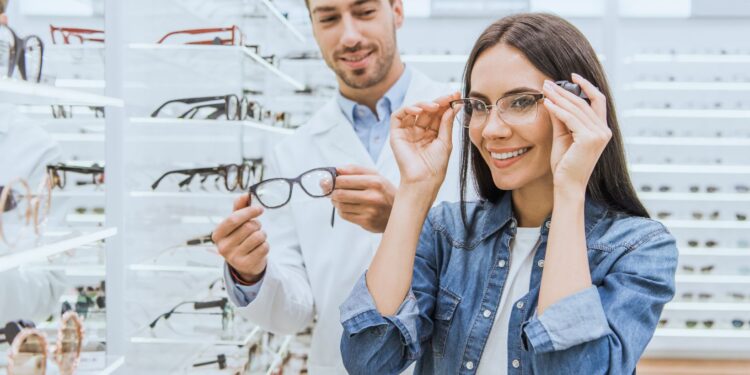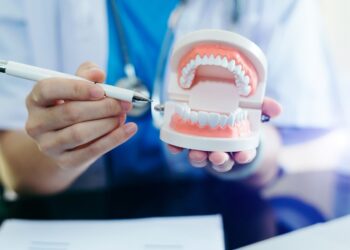Wearing the right lenses is key if you want sharp, comfortable vision every day. You should usually replace the lenses in your eyeglasses every one to two years, or sooner if you notice changes in your vision, scratches, or damage. This helps you keep up with any prescription changes and keeps your view clear.
Your eyes can change as you get older or if your daily habits shift. Staying up-to-date with your lenses helps you avoid eye strain, headaches, and trouble seeing clearly. If you notice your glasses aren’t as comfortable or clear as they used to be, it may be time for new lenses.
Wondering if you can hold off a little longer or if it’s time for an update? Knowing when to act can make a big difference in how well you see and feel every day.
How Often Should You Replace the Lenses in Your Eyeglasses?
Replacing your eyeglass lenses is important for keeping your vision clear and your eyes comfortable. It’s also important for keeping up with changes to your prescription or lens technology.
Recommended Lens Replacement Frequency
Most people should replace their eyeglass lenses about every one to two years. This helps you keep up with changes in your eyesight and wear and tear on the surface of your lenses. Children and teens may need new lenses more often because their vision can change quickly.
Your eye doctor may suggest more frequent changes based on your specific needs. If you have trouble seeing clearly or develop headaches, it could be time to schedule an eye exam and consider getting new lenses. Fast lens replacement services for glasses can help you get new lenses quickly if your current ones are damaged or out of date.
Some companies offer the option to order new lenses for existing frames without a long wait. This makes it easy to update your glasses when you need to.
Signs Your Eyeglass Lenses Need to Be Replaced
Look for scratches, chips, or a cloudy appearance on your lenses. Any of these can make it harder to see and can bother your eyes. Anti-reflective or blue light coatings that start to peel or fade also mean it might be time for new lenses.
If you often wipe your lenses and they still seem dirty, even after cleaning, it might be damage to the coating. Difficulty focusing, blurry vision, or eyestrain while reading are clues that your prescription has changed.
Other signs include headaches, squinting more than usual, or pain around your eyes after wearing your glasses for a while. If you notice any of these problems, it is a good idea to get your eyes checked.
Factors That Affect Lens Longevity
Lens material is important. Plastic lenses scratch more easily compared to glass or high-index plastic, which often last longer. How you clean and store your glasses also matters—improper cleaning with rough cloths increases scratching.
Exposure to heat or chemicals can damage some lens coatings. Lenses with anti-reflective or blue light coatings may need to be replaced sooner if the coatings start to break down.
Children, athletes, and people with active lifestyles may need replacements faster because their glasses are more likely to get damaged. Regular eye exams help track changes in your vision so you can replace your lenses at the right time.
Right Practices for Maintaining Optimal Vision with Eyeglasses
Keeping your eyeglasses in good condition supports clear vision and everyday comfort. Paying attention to prescription updates, having routine eye exams, and choosing the right lens materials can help you get the best use from your glasses.
Impact of Prescription Changes
Your eyes can change over time, sometimes without you even noticing. If you start experiencing headaches, squinting, or blurry vision, your prescription may be out of date. Wearing old prescription glasses may cause your eyes to work harder, making you feel tired or uncomfortable.
It’s helpful to track any new symptoms you notice, like trouble reading small print or difficulty seeing road signs at night. These changes can be small at first, but they signal it’s time for new lenses. Promptly updating your lenses can make tasks like reading, working, or driving easier and safer.
Importance of Regular Eye Exams
Regular eye exams offer more than just a prescription check. An eye doctor will also look for early signs of health conditions such as diabetes or high blood pressure.
Scheduling a checkup every one to two years is a good idea, even if your vision feels stable. These visits help spot changes that you might not notice on your own. For children, seniors, or anyone with eye health concerns, more frequent exams may be recommended.
Benefits of regular eye exams:
- Receive updated prescriptions
- Catch eye health problems early
- Get advice on lens types and coatings
- Address any new symptoms or vision changes
Lens Material and Coating Considerations
Different lens materials can affect comfort, safety, and how long your glasses last. Plastic lenses are light and cheap, while polycarbonate lenses are tougher and less likely to break. For those who wear glasses all the time, lightweight materials like high-index plastic can help reduce pressure on your nose and ears.
Lens coatings can block glare, filter UV light, and prevent scratches. An anti-reflective coating can cut down on eye strain, especially if you use screens a lot. If you’re outside often, UV protection is also important. Cleaning your lenses properly and keeping them in a case when not in use can help maintain their condition for longer.
Conclusion
You should regularly check your eyeglasses for signs like scratches, discomfort, or cloudy lenses. If you notice changes in your vision, it may be time to update your lenses. Most people find it helpful to get an eye exam every one to two years.
Regular lens updates can help you keep your vision clear and comfortable. Staying aware of your eye health makes daily tasks easier and more comfortable.














Discussion about this post